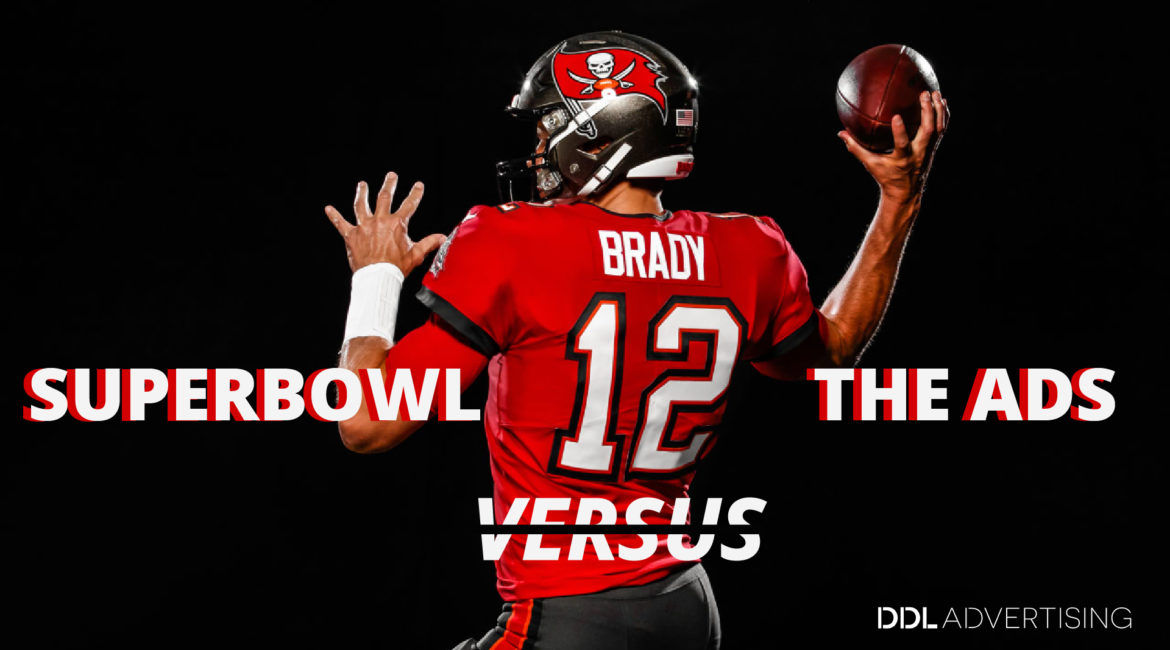Ah, Super Bowl Sunday, the culmination of an American tradition. Grown men tackling each other to the ground, it’s precisely the activity that keeps the fabric of American civilization glued together during these trying times. If you’re a fan of either Kansas City or Tampa Bay, congratulations on being heavily invested in the outcome of this game. For fans of the remaining 30 franchises, get ready for your consolation prize: clogging your arteries with over 12 million pizzas, a whopping 1.4 billion chicken wings, and, of course, watching the heralded Super Bowl Ads.
But what is a Super Bowl without some drama leading up to the event? There were some rumblings online this year that some of America’s biggest brands would be withdrawing from the advertising world’s marquee venue. In a year of a pandemic, and of considerable economic and social turbulence, this may present the most difficult challenge for advertisers to strike the appropriate tone and message. A mistake on this stage is a branding catastrophe. It is understandable if they experience cold feet.
We hope that advertisers rise to the occasion and present their Sunday best. Because at the end of the day, the real hero of the Super Bowl is not the team with the ball down one possession to win the game, it’s the icons of American commerce, the titans of industry who entertain us, humor us, even move us with a multi-million dollar 30 second time slot. So without further ado, here is what we can expect.
Cost:
This year a 30 second ad spot will come in just shy of six million dollars, so don’t expect to see an ad for your local florist. A price tag this hefty is a barrier to entry that admits only the largest and most established brands. After all, over 100 million viewers are expected to tune in. With social gathering options very limited it is safe to assume a greater share of the market may be watching.
In the 1967 Super Bowl, the game’s inaugural event, a 30 second time slot cost just $42,500. Adjusted for inflation, that would be equivalent to $336,500 in 2021. The scope and prominence of the Super Bowl platform has catapulted that 1967 figure nearly 15 times greater in value in 2021. The exposure and brand awareness generated by advertising during the Super Bowl is recognized as a premium, and the associated costs reflect that.
Who is Out:
The gridiron will be parched this year. Long time staples Coca-Cola, Budweiser, and Pepsi will all be on the sidelines (though Pepsi is sponsoring the halftime show). For both Coca Cola and Budweiser, the beverage goliaths have vocally stated they will be taking their Super Bowl ad budget and instead allocating it towards Vaccine awareness campaigns and Covid-19 relief funds.
Who is In:
Where there is vacancy there is opportunity. Super Bowl LV will see a number of first-time advertisers. Among them, look for Fiverr, Chipotle, DoorDash, and Huggies. Fiverr is the embodiment of the 2020 Covid-19 work experience. Working remotely, collaborating via screens, email and software have become the norm. This is the golden age of soliciting a service online, and had it not been for the pandemic, it is not unreasonable to think Fiverr would never toss it’s hand into the ring.
DoorDash and Huggies are even more representative of the 2020 time-capsule. In Abraham Maslow’s 1943 work, “A Theory of Human Motivation,” he outlined the main drives of human development and the pursuit of goals that govern them. The bottom tier, and the most important to be met, are our basic physiological needs. Food, water, shelter, security, etc. The truly primitive drives of survival. Contrast that with the enlightenment of stage 5, self actualization. These are deeply personal matters of identity and fulfillment, the pursuit of goals, the abstract, the creative and artistic. Suffice to say, this is not the year of self-actualization. Amidst lockdowns and financial insecurity, DoorDash and Huggies appeal to our basic physiological needs. After all, supermarket aisles became impromptu WWE stadiums as people wrestled over toilet paper. 2022 may be the year to reclaim the lofty goals of painting, self-improvement and transcendence.
In another tone, Kellog’s addressed the question of Super Bowl ads with emphatic affirmation, stating,
“Kellogg Company has a tremendous philanthropic track record, helping to address society’s most fundamental challenge of hunger for 115 years,” a company representative said. “For example, Kellogg and its charitable funds have now donated $18 million in food and funds to support ongoing global COVID-19 hunger relief efforts. We know this has been an unprecedented year, but sports and the Big Game specifically can be a small moment of escape for consumers. It’s something they look forward to.”
Perhaps Kellog’s is right. Where our lives have been thrown into a new world of uncertainty and unprecedented restrictions, perhaps the illusion of normalcy and reliability is the comfort we crave most right now.
A Look Back on Some of Our Favorite Ads:
In our enthusiasm for the ads this upcoming weekend, we thought it would be fun to take a look back at some of our favorite ads from past Super Bowls.

